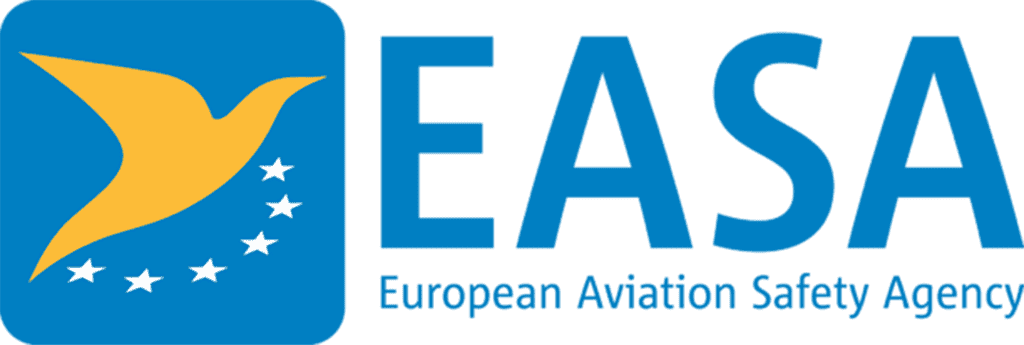Every day, thousands of aircraft take off and land safely thanks to the invisible network of data guiding every flight—from weather forecasts and flight plans to safety reports. The safety reports that are filed by airlines, airports, and aviation professionals help authorities gather insights, identify risks and prevent accidents before they happen. Aviation safety isn’t driven by chance; it is the result of continuous learning and improvement that is driven by data.
To make the process more reliable and consistent worldwide, the European Union Aviation Safety Agency (EASA) has developed a modern, web-based reporting system that facilitates the secure and efficient collection, management, and sharing of safety information. ICAO and the European Union have signed a Working Arrangement enabling ICAO to use ECCAIRS and allowing interested ICAO Member States to access the system for reporting to the Accident/Incident Data Reporting (ADREP) System .
Built to align with ICAO’s ADREP taxonomy, ECCAIRS 2 provides a common language for how safety data is classified and analyzed, ensuring that information from across the world can be understood and acted upon consistently. The system replaces the long-serving ECCAIRS 1, which has supported aviation safety reporting for decades and is now being phased out in favour of this more modern platform.
![]() What is ECCAIRS 2?
What is ECCAIRS 2?
ECCAIRS 2 is a modern, web-based system that helps ICAO and aviation authorities to collect and manage reports on occurrences that include incidents, irregularities and other safety-related events. It is developed and maintained by EASA and implements ICAO’s ADREP taxonomy, a standardized structure that ensures safety data is classified and understood in the same way around the world.
By organizing safety information consistently, ECCAIRS 2 makes it easier for organizations to share and learn from each other’s data. The system supports collaboration across States and helps turn local observations into knowledge that can improve aviation safety globally.
ECCAIRS 2 replaces the earlier ECCAIRS 1 system, which served the aviation community for decades but is no longer supported or updated. The new version offers a more secure, user-friendly, and cloud-based environment that meets today’s technology and cybersecurity needs.
![]() From ECCAIRS 1 to ECCAIRS 2
From ECCAIRS 1 to ECCAIRS 2
The ECCAIRS 2 programme began in 2017 and became fully operational in 2021. While some organizations still use the older system locally, ECCAIRS 1 is no longer maintained or updated. Since 2019, it has not received any new features, security patches, or taxonomy updates. As technology evolves, the old version can become incompatible with modern server environments and more vulnerable to cybersecurity risks.
With ECCAIRS 2, authorities can now benefit from a system that is continuously updated, secure, and aligned with current data-sharing standards. The transition marks a major step forward in ensuring that safety information is protected and that reporting tools keep pace with the needs of today’s aviation community.
Before ECCAIRS 2, many States used separate systems to collect and manage safety data, which made international comparison and coordination more difficult. ECCAIRS 2 brings everyone onto the same platform — and with options that range from free to cost-recovery, it’s designed to be accessible for all Member States, regardless of size or resources.
![]() Who can use ECCAIRS 2?
Who can use ECCAIRS 2?
All EASA Member States and ICAO Member States can use it. To encourage broader adoption of ECCAIRS 2 among Member States, ICAO launched an Annex 13 ADREP database that runs on ECCAIRS 2 technology. Annex 13 requires States to submit aircraft accident and incident investigation reports.
In addition to using ECCAIRS 2 to report Annex 13 events, each State that adopts ECCAIRS 2 can use it as its national platform for collecting safety reports. Airlines, airports, and other aviation organizations then submit their information through the State’s portal, ensuring consistent and secure reporting across the national aviation system.
To support this effort, ICAO issued a State Letter explaining the three options Member States can choose from to meet Annex 13 ADREP requirements, each based on ECCAIRS 2 technology.
![]() The available options to access ECCAIRS 2
The available options to access ECCAIRS 2
- ECCAIRS 2 BASIC option (managed by ICAO and free of charge)
Managed by ICAO, this option allows States to report Annex 13 accident and incident events into the ADREP through a simple online portal. It is free but limited in functionality to Annex 13 obligations.
Note: For authorities wishing to operate their own national reporting system instead of ECCAIRS, ICAO also provides through ECCAIRS 2 an API-based submission option. This allows States to remain fully compliant with ICAO ADREP requirements without relying on the ECCAIRS 2 interface.
- ECCAIRS 2 ADVANCED option (managed by EASA on a cost-recovery basis)
States interested in more advanced features—for example, tools to analyse Annex 13 data or to build a full national safety database covering Annex 19—can use ECCAIRS 2.
EASA provides access, support, and updates, but as this involves additional resources and costs on EASA, a Service Agreement and a cost-recovery fee would be required.
How are onboarding and support provided?
Authorities interested in joining the ECCAIRS 2 Advanced option will be assessed on:
- Their previous experience with ECCAIRS
- Their readiness under Annex 13 or 19
Support may be provided directly by EASA or through ICAO’s Implementation Packages (iPacks). The BASIC Option iPack is already available, the ADVANCED iPack will be launched soon. Since support capacity is limited, onboarding follows a first-come, first-served approach.
Next steps for Member States
By joining ECCAIRS 2, States strengthen the global exchange of safety data—helping the aviation community learn from every occurrence and prevent future accidents.
To learn more about how to join or determine which option best fits their needs, authorities can send an email for additional information and support. ICAO will coordinate with EASA to guide them through the onboarding process, from the initial assessment to operational rollout, and answer any technical or procedural questions.
;





